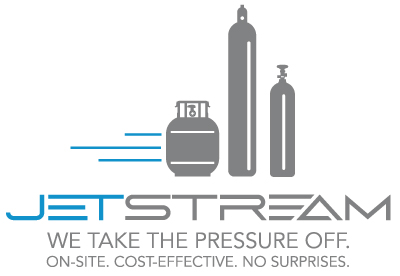 The Department of Transportation (DOT) has specific recommendations on the “Recycling and Disposal of Compressed Gas Cylinders” detailed in a Safety Advisory which can be found here. Additional restrictions on the transportation of cylinders are covered in DOT Regulations 40 CFR 173.301 part 7 & Part 8.
The Department of Transportation (DOT) has specific recommendations on the “Recycling and Disposal of Compressed Gas Cylinders” detailed in a Safety Advisory which can be found here. Additional restrictions on the transportation of cylinders are covered in DOT Regulations 40 CFR 173.301 part 7 & Part 8.Some of the key points for recycling facilities from these advisories and regulations include:
-
Any cylinder still containing material should be considered hazardous. Cylinders are pressure vessels intended to hold compressed gases, and present two serious hazards – the pressurized cylinder itself, which has explosive potential, and the materials being stored within, which may be poisonous or flammable.
-
To ensure that cylinders are safe for handling they need to be purged of all contents. Recycling facilities and scrapyards should only process cylinders that have been rendered incapable of maintaining pressure through methods such as:
-
Hole drilled into the sidewall
-
Head valve has been removed
-
-
In order to transport a cylinder under pressure off your yard you must have the paperwork to prove that the cylinder was last filled prior to the inspection expiration date stamped onto the cylinder.
- Cylinders under pressure without a current inspection date or the paperwork to prove the cylinder was last filled prior to the expiration date are considered hazardous materials and transportation of hazardous materials must meet strict Federal and State guidelines.
-
When cylinders are categorized as hazardous materials they must be individually “overpacked” in a strong outer packaging prior to transport. Tossing cylinders under pressure into bins and transporting them off of your yard is very dangerous and against DOT regulations.
-
It is against DOT regulations to transport cylinders under pressure without a current inspected date stamped on the cylinder or the paperwork to prove the cylinder was last filled prior to the expiration date off your yard unless your team or vendor is HAZMAT trained, certified and have met all HAZMAT Transportation Federal and State Regulatory Requirements.
The bottom line is not following DOT regulations is dangerous to your team and the environment. It can also get very expensive and be a PR nightmare as evident by the negative press coverage and OSHA fine of $73,000 for violations that caused the Blue Rhino plant explosion that occurred in Florida in 2013.

